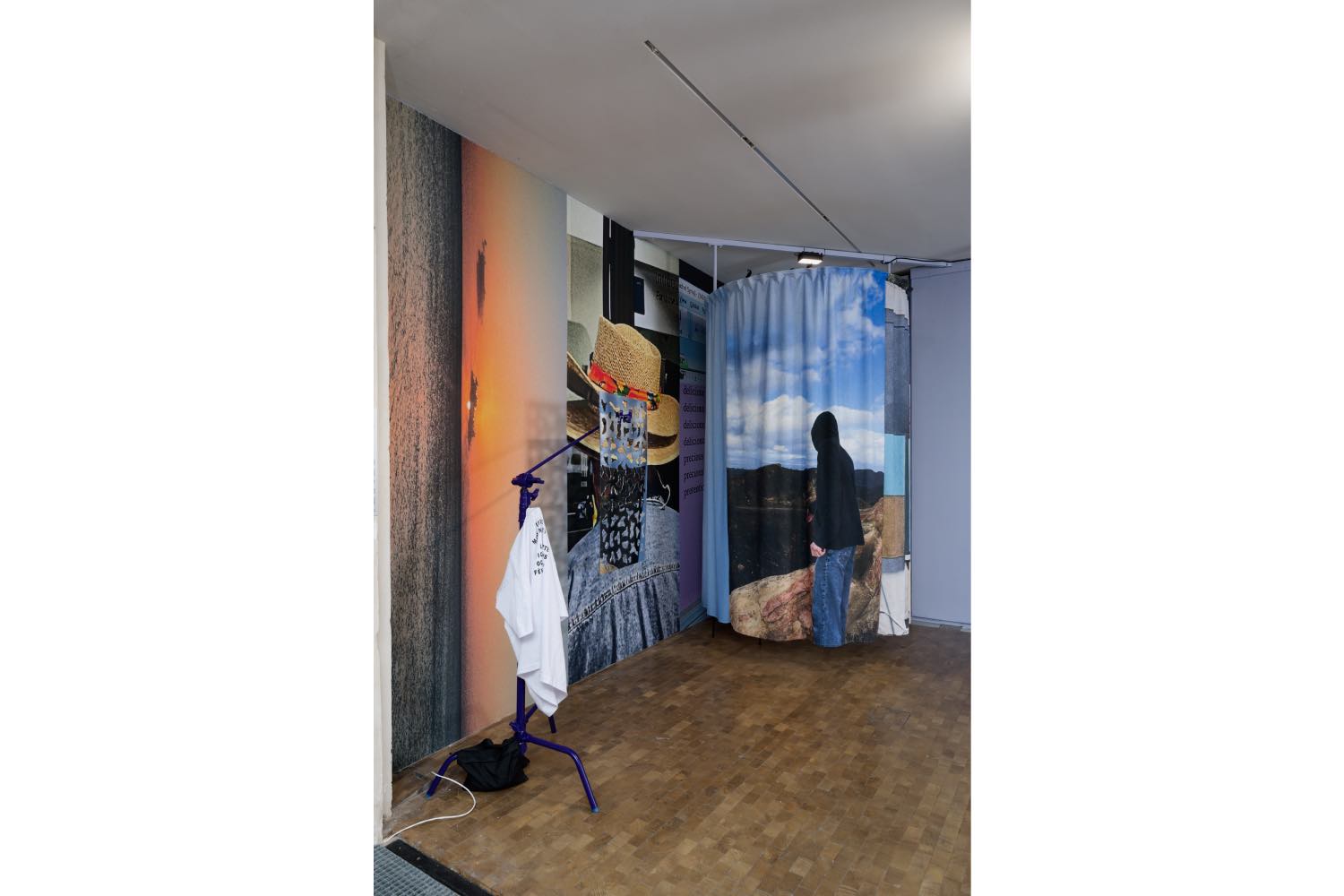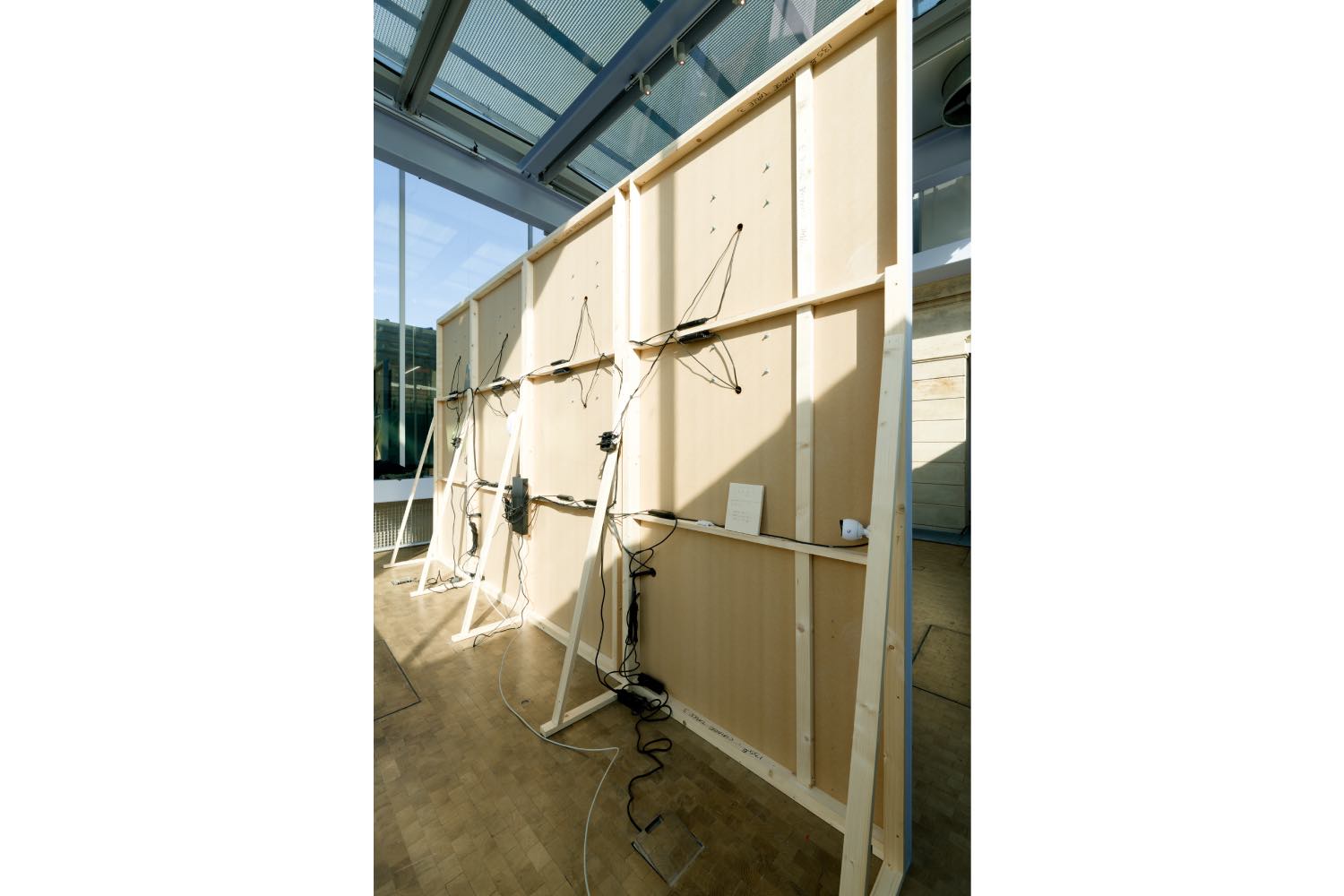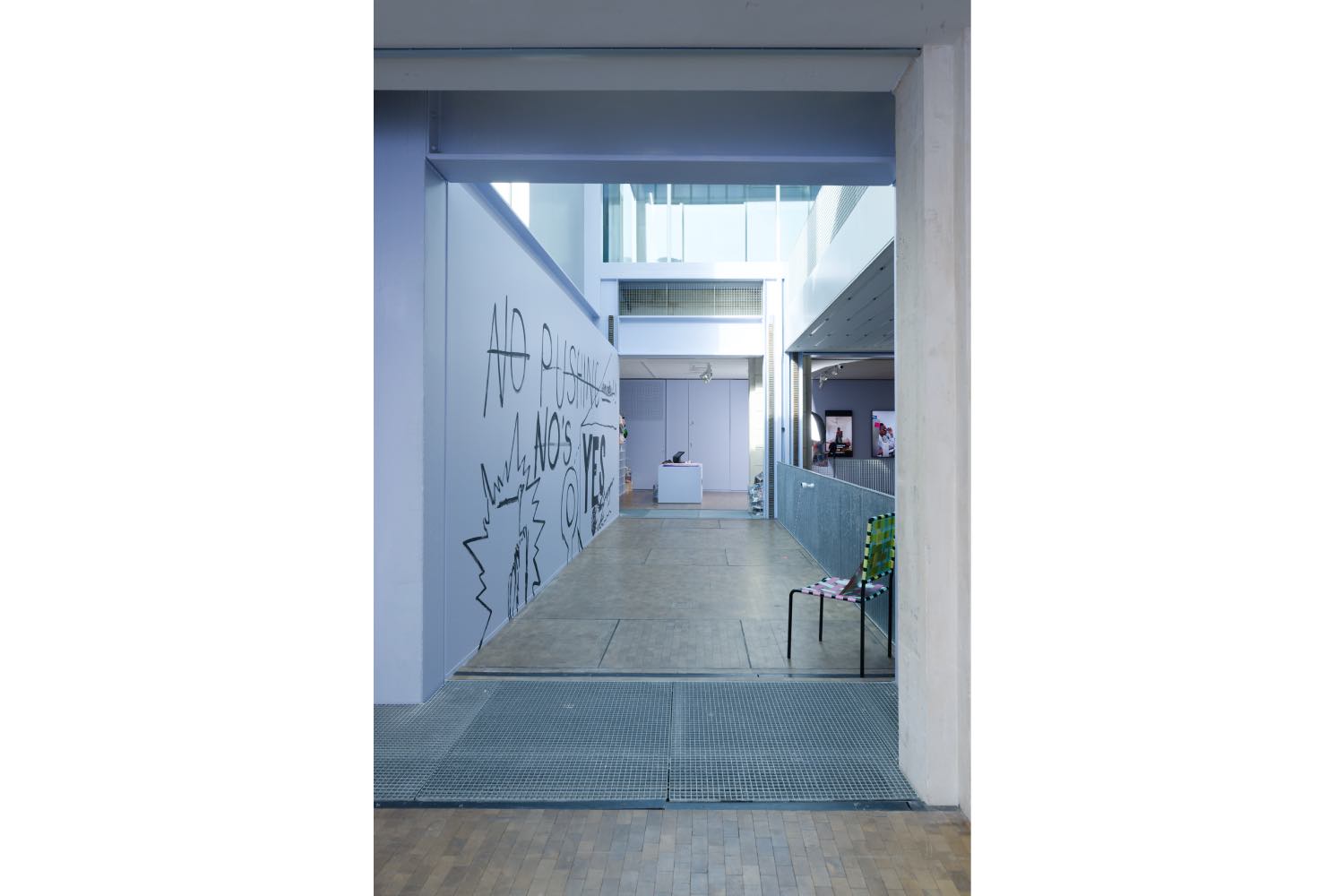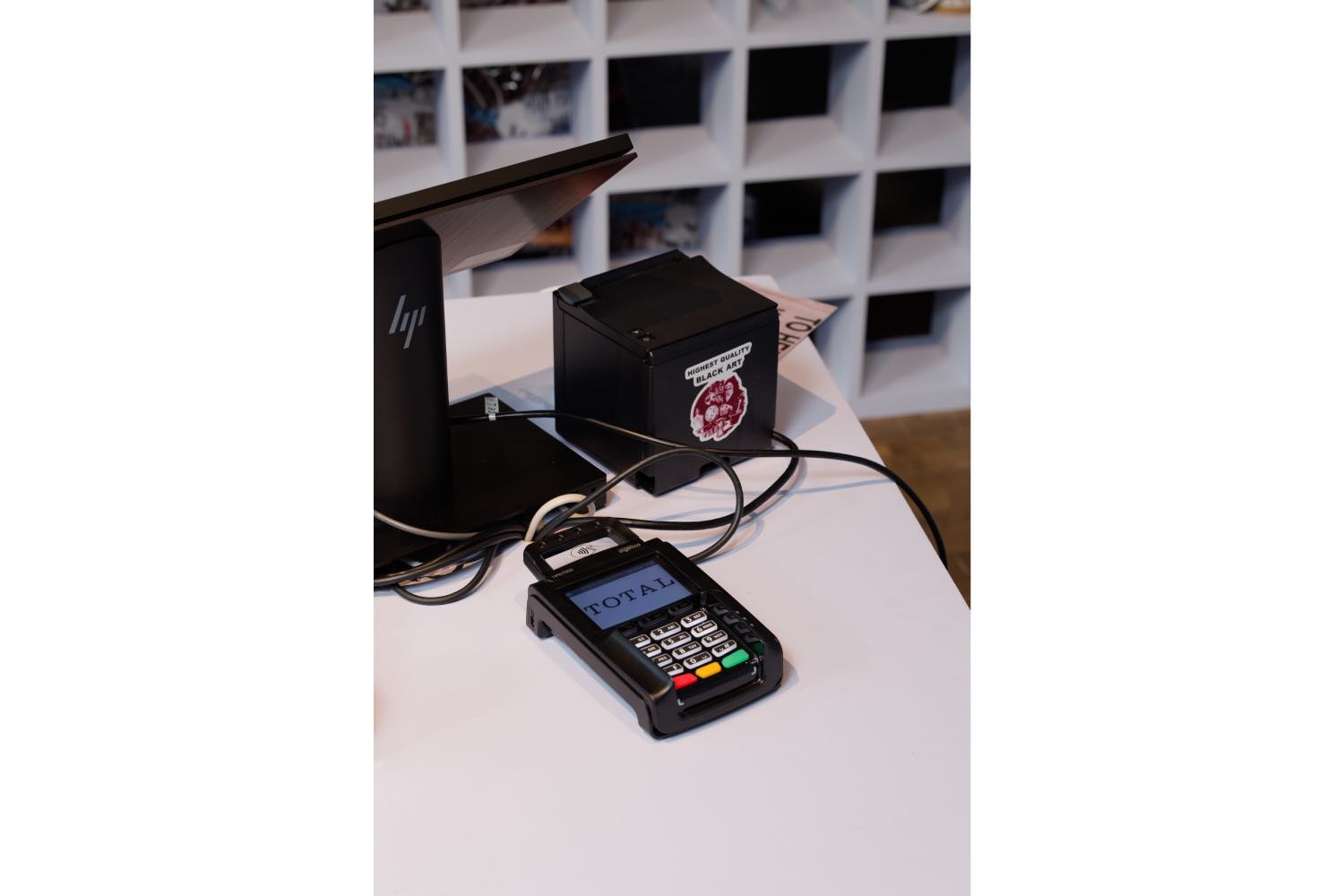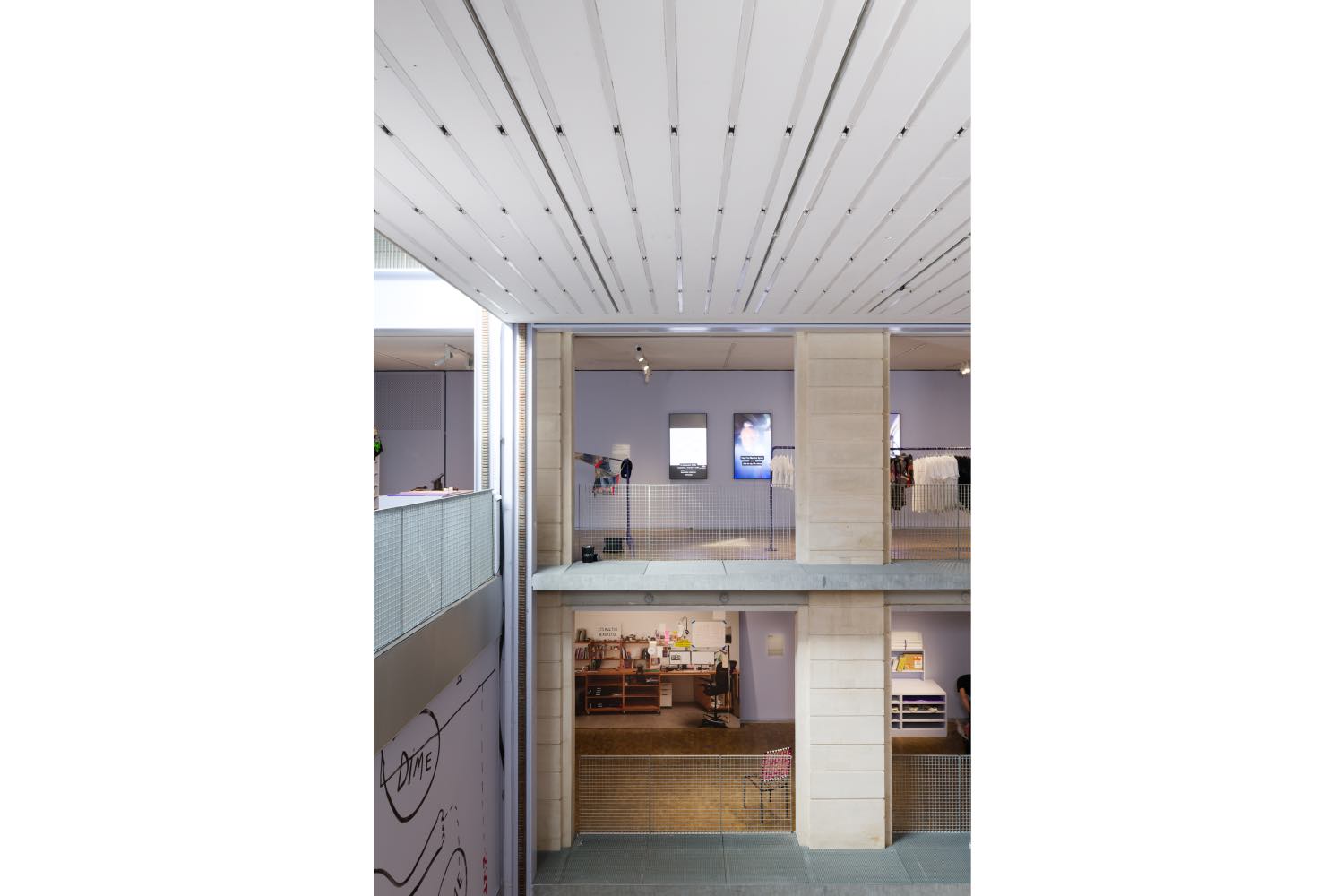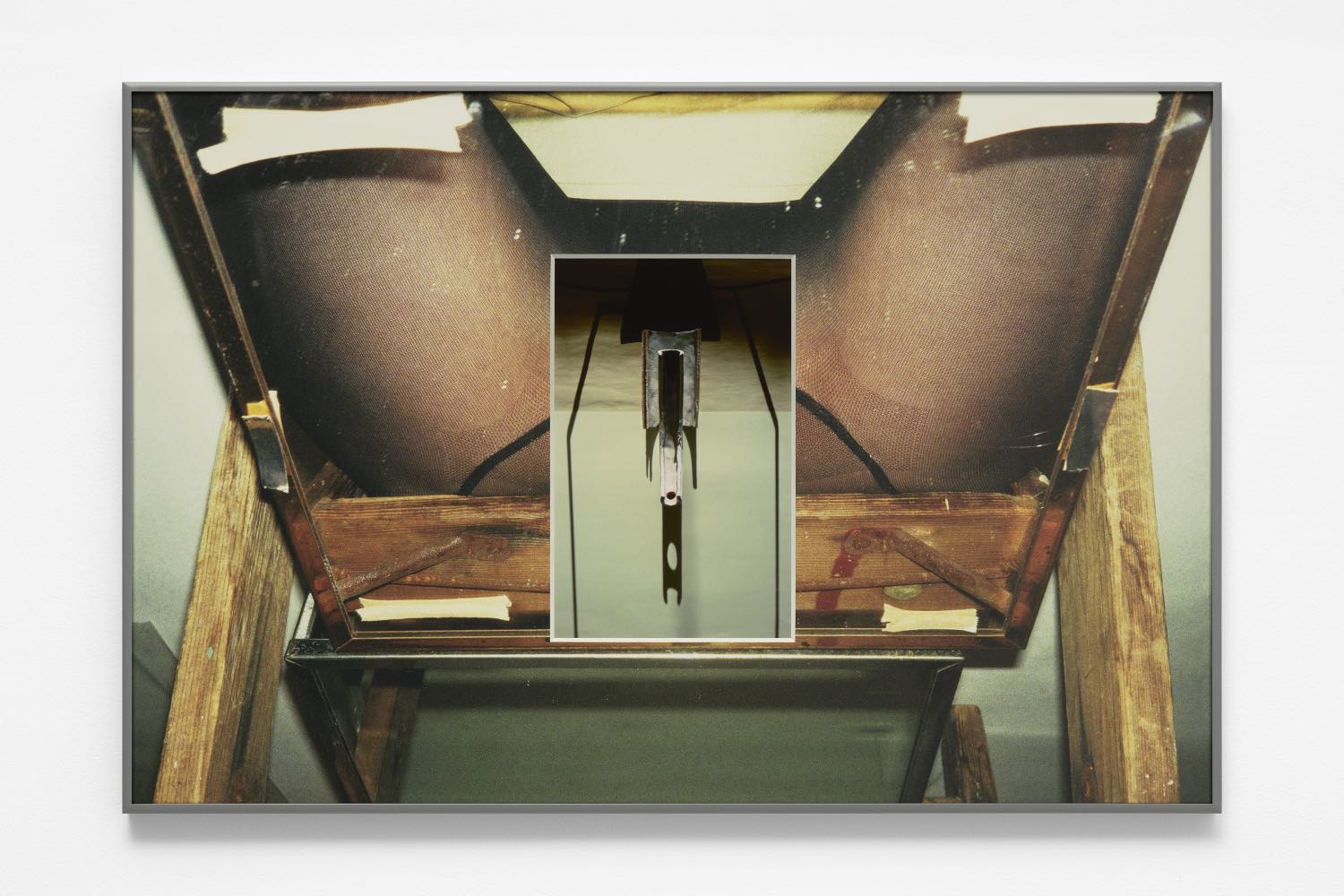Martine Syms’s work combines humor and social commentary to addressAfrican-American consciousness, its relationship to feminist thought, radical theoretical models, and systems of representation in relation to the poetic. In “Total,” the artist’s first retrospective exhibition in France, presented at Lafayette Anticipations in Paris, Syms has established a concept store across its three levels, comprising a collection of retail situations offering T-shirts, water bottles, notebooks, and various other accessories. It is a “theater of the everyday”1 in which every experience is orchestrated. Informed by relationships between media and power, “Total” is conceived as an infrastructure for exploiting, encompassing, and reproducing systems of surveillance, tracking, and manipulation in relation to the amusements that late capitalism establishes within everyday spaces associated with possession, consumption, and self-construction — specifically within the context of a retail environment. Each item is emblazoned with the artist’s name and the title of the exhibition, some even displaying Syms’s portrait. Conceived in relation to display fixtures — a rack, a presentation table, a cash desk, etc. — the merchandise stands adjacent to other objects that reveal themselves as earlier works from the artist, predominantly films, which are never clearly distinguished as such, as they too are seated on chairs, near posters, in a fitting room, or above a pile of transparent bags on which only the artist’s name appears in large letters. Eventually, the viewer — reduced to the position of a passive consumer — navigates an environment that only references an exhibition that is displayed T-shirts, key chains, and other goodies.
TikTok videos, recorded in POV and played back on wall-mounted monitors, seem staged. Other films — crucial to Martine Syms’s oeuvre — are presented with little regard for viewer engagement, rendering consequential interactions impossible and subjecting visitors to a distinctive spectatorial labor as they navigate a work whose only theory is that it is a total work in itself. This situation highlights the contextual result of “Total,” whereby the most prominent works only resonate with the exhibition’s framing as a retail space. Here, Syms’s earlier pieces — photographs, films, and statement-oriented mural interventions — are displayed to emphasize their interchangeability (a sort of set design only at the service of merchandise), prompting critical reflection on the commodification of art and the viewer’s role in such a context.
Ultimately, experiencing the exhibition’s conceptual nuances becomes arduous; while this system of activation encourages an examination of economic exchange relationships through commercial objects within a space fundamentally linked to this specific history — Lafayette Anticipations being the foundation of the Galeries Lafayette department stores group — it also appears to engage in participatory logics that induce each viewer to perceive their purchasing act as a form of entertainment, engagement, and presence. And in fact, no system can be critiqued from within the framework of that same system and as a social practice. The displayed formulas, whose agency is shaped by its facile effect on the masses in contexts of compulsive and unnecessary consumption, ultimately become the very items initially being critiqued — the difference being that these objects are still actually for sale, repeating the logics of that same critiqued commercial prophecy. Not for collectors but for actual middle-class consumers, for whom participation via this exact purchase reinforces the desired sentiment orchestrated upon them by late capitalism — from which art is by no means detached, especially in this type of context. Inevitably, the exhibition becomes a simulacrum; an effect that exists neither in time nor space, akin to a form of protest against it. “Total” is conclusively confronted to the extent to which this operation can genuinely engage with itself and the true limitations it entails when it employs a logic of signs that reproduce object-related capitalism.

